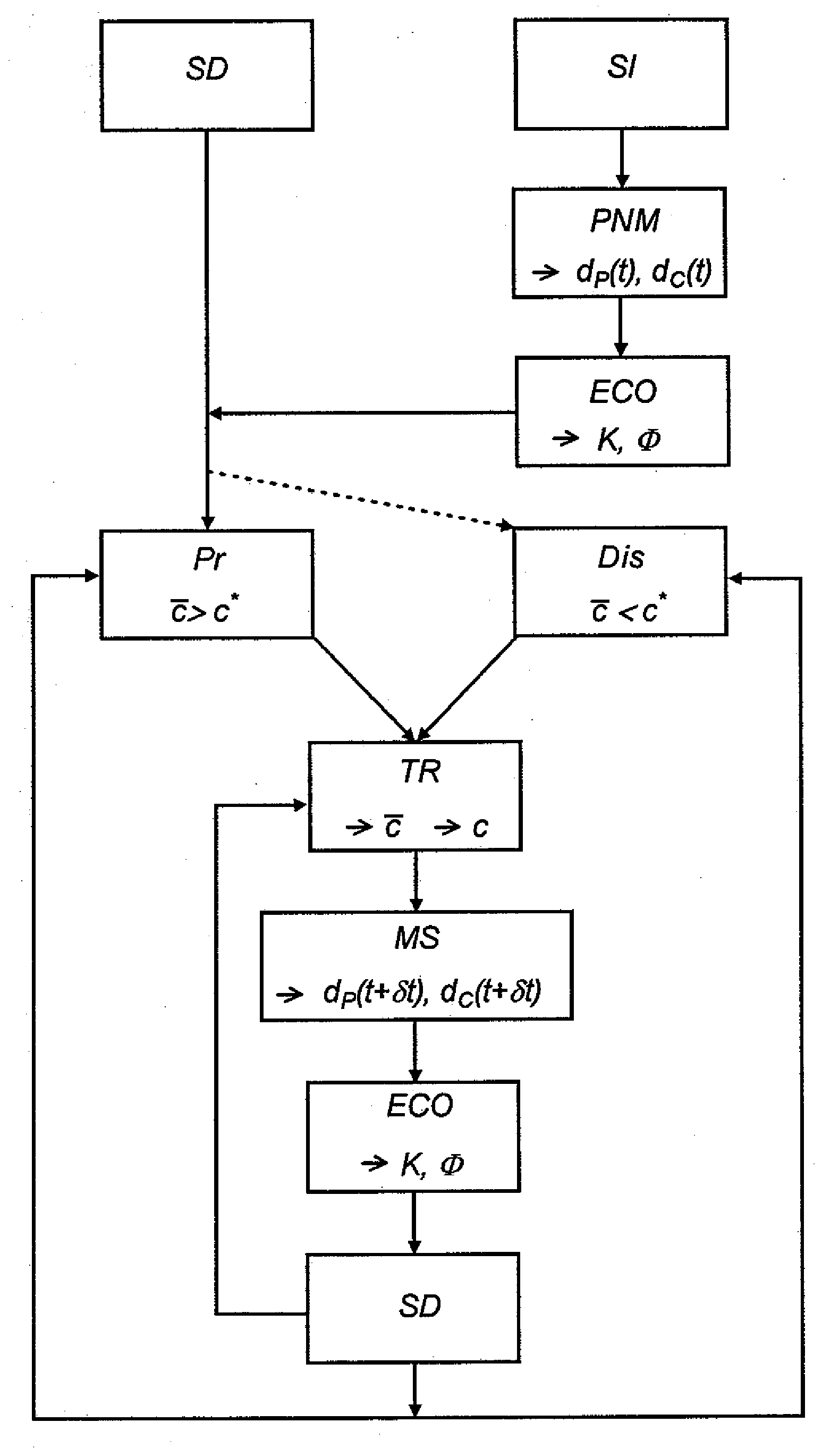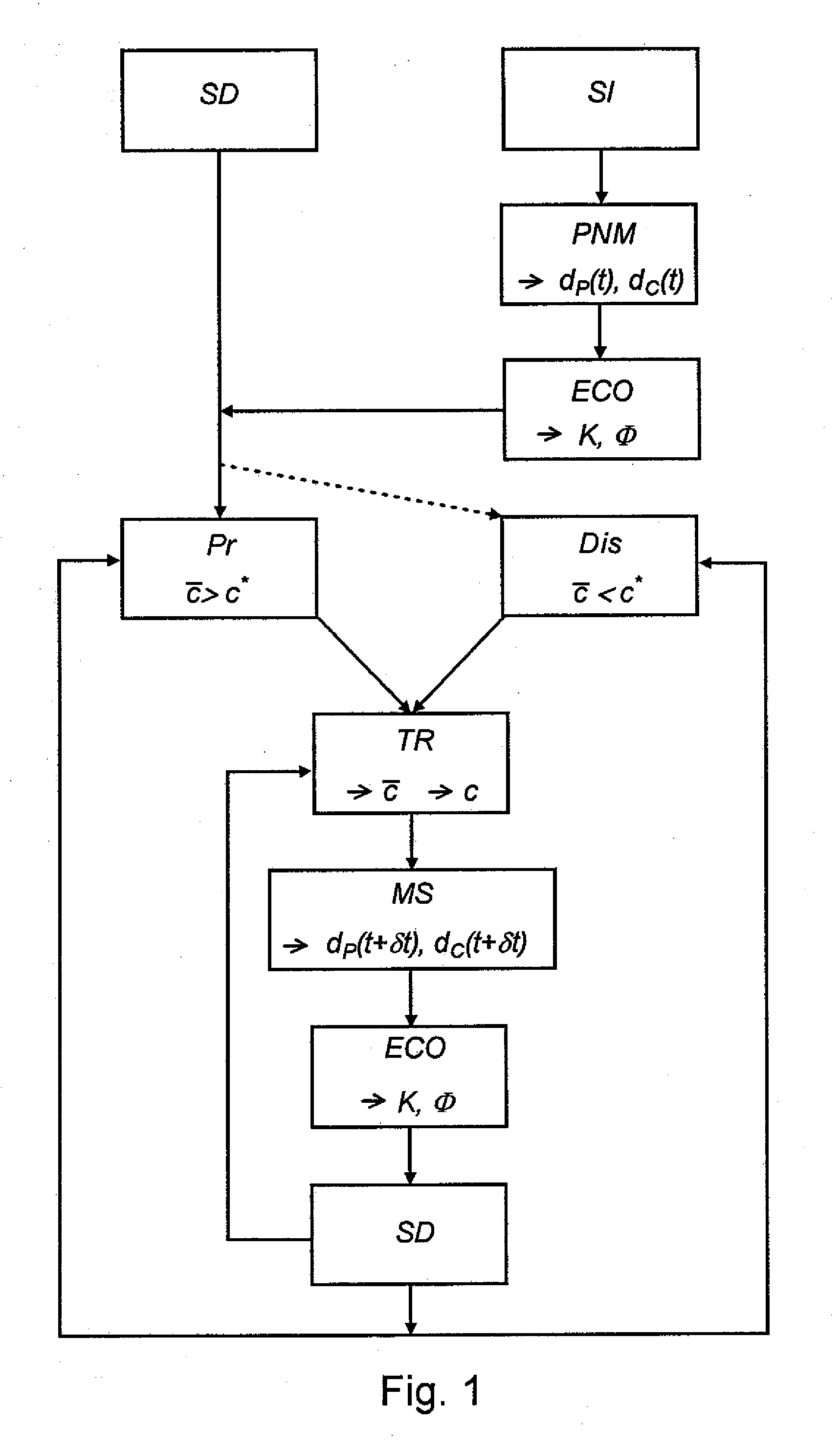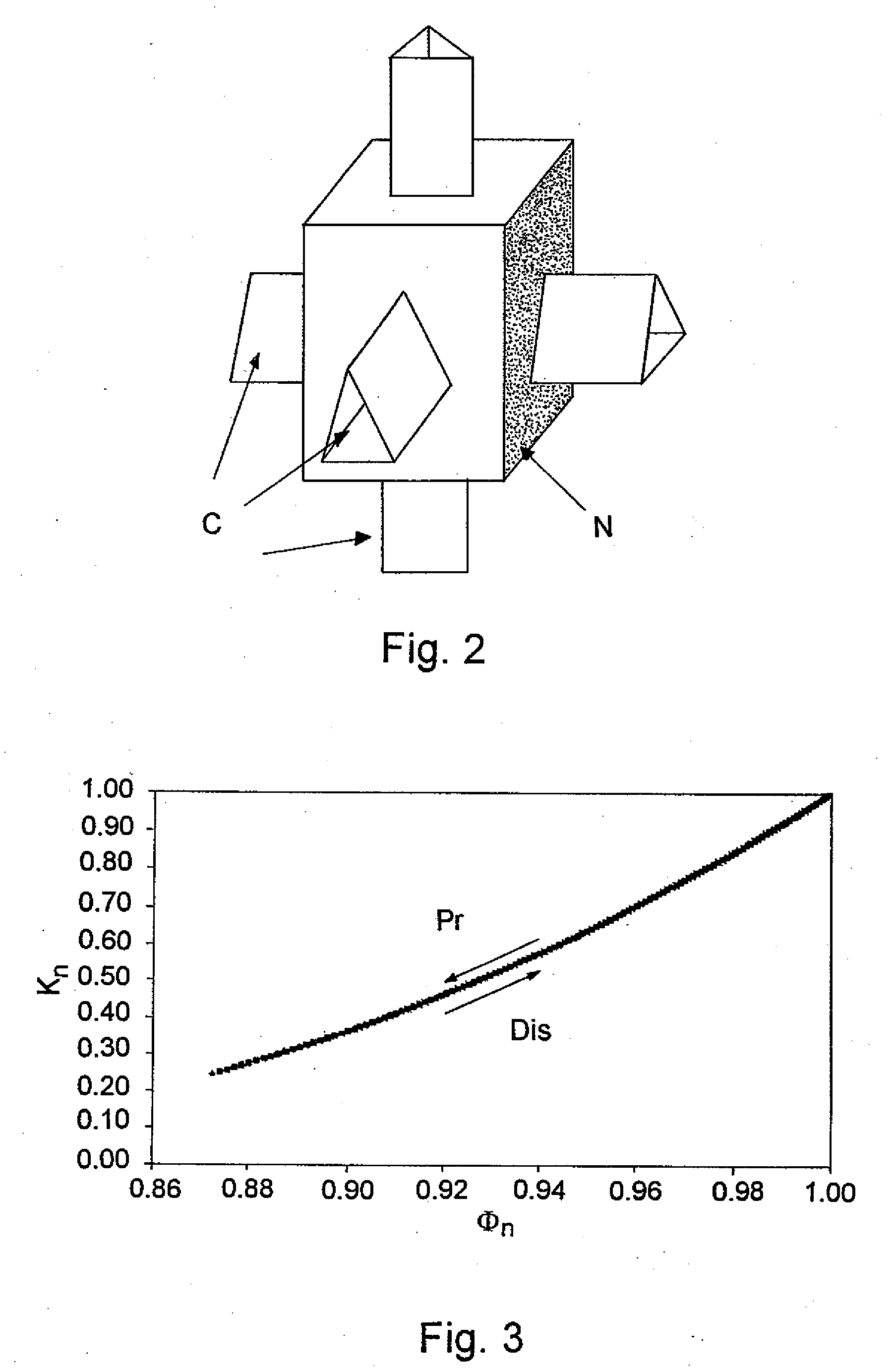Method of determining the evolution of petrophysical properties of a rock during diagenesis
a technology of petrophysical properties and diagenesis, which is applied in the field of determining the evolution of petrophysical properties of rocks during diagenesis, can solve the problems of no method providing the evolution of permeabilities and porosities, and achieve the effect of enhancing hydrocarbon recovery
- Summary
- Abstract
- Description
- Claims
- Application Information
AI Technical Summary
Benefits of technology
Problems solved by technology
Method used
Image
Examples
example 1
Homogeneous Initial Geometry (all the Pores have the Same Diameter)
[0106]According to this example, a three-dimensional homogeneous network of 250 pores (10*5*5) is considered. The precipitation and dissolution reaction regimes are the same: Pe=10, PeDa=0.1 for the precipitations and the dissolutions.
[0107]In this instance, there is no permeability evolution. The initial and final porosity and permeability conditions are the same. The dissolution (Dis) and the precipitation (Pr) must have a different reaction regime to be able to eventually observe a permeability evolution. Otherwise, the effects of the other are cancelled, as illustrated in FIG. 3. FIG. 3 shows permeability (Kn) versus porosity (φn) for a simulated diagenetic cycle in a three-dimensional homogeneous network of 250 pores (10*5*5), with Pe=10, PeDa=0.1 for the precipitations and the dissolutions.
example 2
Homogeneous Initial Geometry (all the Pores have the Same Diameter)
[0108]According to this example, a three-dimensional homogeneous network of 250 pores (10*5*5) is considered. This time, however, the precipitation and dissolution reaction regimes are different: PeDa=0.01 for dissolutions and PeDa=1 for precipitations. This corresponds to a dissolution that is one hundred times slower than the precipitation.
[0109]The method gives the evolution of the network-scale calculated permeability and porosity. FIG. 4 shows permeability (Kn) versus porosity (φn) for the diagenetic cycle in the three-dimensional homogeneous network of 250 pores (10*5*5). A marked permeability drop is observed during the diagenesis. This is explained by the enlargement of the pores and the reduction of the channels.
[0110]Since precipitation and dissolution do not cause the same deformation, because of different reactive regimes, the diagenetic cycle leads to an accentuation of the heterogeneity between pores an...
example 3
Heterogeneous Initial Geometry (all the Pores do not have the Same Geometry)
[0111]One advantage of the method according to the invention is readily taking into consideration the effect of the pore network structure. To illustrate this capacity, diagenesis is simulated in a more realistic pore network with a pore size distribution.
[0112]According to this example, mean reactive regimes identical to the previous cases are selected: Pe=10, PeDa=1 for precipitation and PeDa=0.01 for dissolution. The heterogeneous character of the diameters generates a heterogeneity within the reaction regime.
[0113]By applying the method according to the invention, it is established that there are nearly two orders of magnitude between the apparent reactive coefficient of the larger pores and that of the smaller ones. This decrease in the apparent reactive coefficient of the larger pores is translated into an accumulation of the solute in these volumes, which can be readily checked on a concentration map ...
PUM
 Login to View More
Login to View More Abstract
Description
Claims
Application Information
 Login to View More
Login to View More - R&D
- Intellectual Property
- Life Sciences
- Materials
- Tech Scout
- Unparalleled Data Quality
- Higher Quality Content
- 60% Fewer Hallucinations
Browse by: Latest US Patents, China's latest patents, Technical Efficacy Thesaurus, Application Domain, Technology Topic, Popular Technical Reports.
© 2025 PatSnap. All rights reserved.Legal|Privacy policy|Modern Slavery Act Transparency Statement|Sitemap|About US| Contact US: help@patsnap.com



